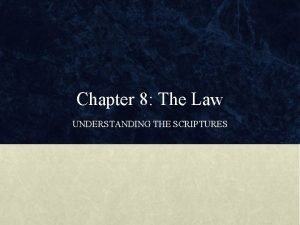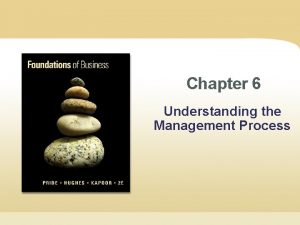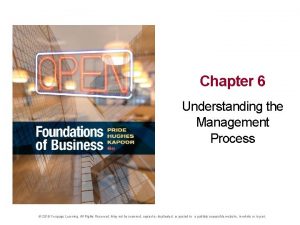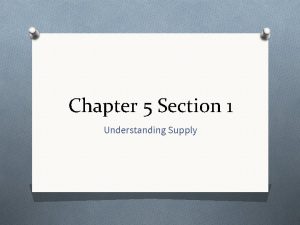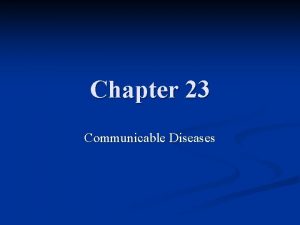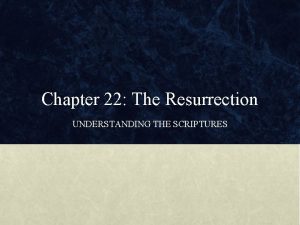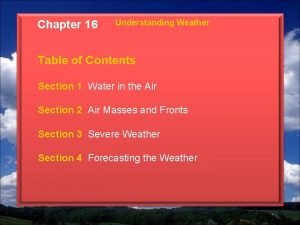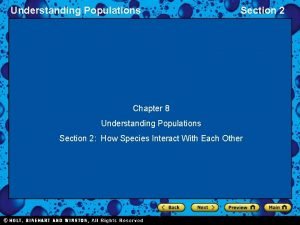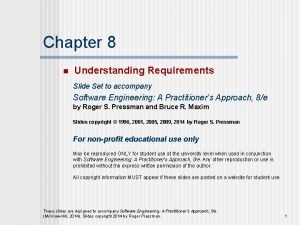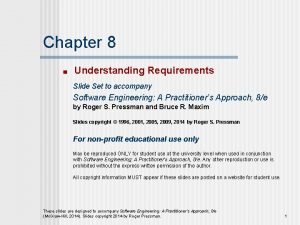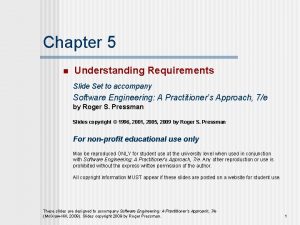Chapter 5 n Lecture 5 Understanding Requirements Slide















- Slides: 15

Chapter 5 n Lecture 5: Understanding Requirements Slide Set to accompany Software Engineering: A Practitioner’s Approach, 7/e by Roger S. Pressman Slides copyright © 1996, 2001, 2005, 2009 by Roger S. Pressman For non-profit educational use only May be reproduced ONLY for student use at the university level when used in conjunction with Software Engineering: A Practitioner's Approach, 7/e. Any other reproduction or use is prohibited without the express written permission of the author. All copyright information MUST appear if these slides are posted on a website for student use. 1

Requirements Engineering-I n Inception—ask a set of questions that establish … n n n n basic understanding of the problem the people who want a solution the nature of the solution that is desired, and the effectiveness of preliminary communication and collaboration between the customer and the developer Elicitation—elicit requirements from all stakeholders Elaboration—create an analysis model that identifies data, function and behavioral requirements Negotiation—agree on a deliverable system that is realistic for developers and customers 2

Requirements Engineering-II n Specification—can be any one (or more) of the following: n n n Validation—a review mechanism that looks for n n n A written document A set of models A formal mathematical A collection of user scenarios (use-cases) A prototype errors in content or interpretation areas where clarification may be required missing information inconsistencies (a major problem when large products or systems are engineered) conflicting or unrealistic (unachievable) requirements. Requirements management 3

Inception n Identify stakeholders n n “who else do you think I should talk to? ” Recognize multiple points of view Work toward collaboration The first questions n n Who is behind the request for this work? Who will use the solution? What will be the economic benefit of a successful solution Is there another source for the solution that you need? 4

Eliciting Requirements n n n meetings are conducted and attended by both software engineers and customers rules for preparation and participation are established an agenda is suggested a "facilitator" (can be a customer, a developer, or an outsider) controls the meeting a "definition mechanism" (can be work sheets, flip charts, or wall stickers or an electronic bulletin board, chat room or virtual forum) is used the goal is n n to identify the problem propose elements of the solution negotiate different approaches, and specify a preliminary set of solution requirements 5

Eliciting Requirements 6

Elicitation Work Products n n n n a statement of need and feasibility. a bounded statement of scope for the system or product. a list of customers, users, and other stakeholders who participated in requirements elicitation a description of the system’s technical environment. a list of requirements (preferably organized by function) and the domain constraints that apply to each. a set of usage scenarios that provide insight into the use of the system or product under different operating conditions. any prototypes developed to better define requirements. 7

Building the Analysis Model n Elements of the analysis model n Scenario-based elements • Functional—processing narratives for software functions • Use-case—descriptions of the interaction between an “actor” and the system n Class-based elements • Implied by scenarios n Behavioral elements • State diagram n Flow-oriented elements • Data flow diagram 8

Use-Cases n n n A collection of user scenarios that describe thread of usage of a system Each scenario is described from the point-of-view of an “actor”—a person or device that interacts with the software in some way Each scenario answers the following questions: n n n n n Who is the primary actor, the secondary actor (s)? What are the actor’s goals? What preconditions should exist before the story begins? What main tasks or functions are performed by the actor? What extensions might be considered as the story is described? What variations in the actor’s interaction are possible? What system information will the actor acquire, produce, or change? Will the actor have to inform the system about changes in the external environment? What information does the actor desire from the system? Does the actor wish to be informed about unexpected changes? 9

Use-Case Diagram 10

Class Diagram From the Safe. Home system … 11

State Diagram Reading Commands System status = “ready” Display msg = “enter cmd” Display status = steady Entry/subsystems ready Do: poll user input panel Do: read user input Do: interpret user input State name State variables State activities 12

Negotiating Requirements n Identify the key stakeholders n n Determine each of the stakeholders “win conditions” n n These are the people who will be involved in the negotiation Win conditions are not always obvious Negotiate n Work toward a set of requirements that lead to “winwin” 13

Validating Requirements - I n n n Is each requirement consistent with the overall objective for the system/product? Have all requirements been specified at the proper level of abstraction? That is, do some requirements provide a level of technical detail that is inappropriate at this stage? Is the requirement really necessary or does it represent an addon feature that may not be essential to the objective of the system? Is each requirement bounded and unambiguous? Does each requirement have attribution? That is, is a source (generally, a specific individual) noted for each requirement? Do any requirements conflict with other requirements? 14

Validating Requirements - II n n n Is each requirement achievable in the technical environment that will house the system or product? Is each requirement testable, once implemented? Does the requirements model properly reflect the information, function and behavior of the system to be built. Has the requirements model been “partitioned” in a way that exposes progressively more detailed information about the system. Have requirements patterns been used to simplify the requirements model. Have all patterns been properly validated? Are all patterns consistent with customer requirements? 15
 Basic dance steps in heel and toe polka
Basic dance steps in heel and toe polka 01:640:244 lecture notes - lecture 15: plat, idah, farad
01:640:244 lecture notes - lecture 15: plat, idah, farad Slide and divide method of factoring
Slide and divide method of factoring Management fifteenth edition
Management fifteenth edition Human resource management lecture chapter 1
Human resource management lecture chapter 1 Human resource management lecture chapter 1
Human resource management lecture chapter 1 Chapter 9 lesson 3 understanding violence
Chapter 9 lesson 3 understanding violence Understanding the scriptures chapter 24 study questions
Understanding the scriptures chapter 24 study questions Chapter 6 understanding the management process
Chapter 6 understanding the management process The process of evaluating and regulating ongoing activities
The process of evaluating and regulating ongoing activities Chapter 5 section 1 understanding supply
Chapter 5 section 1 understanding supply Sarophytes
Sarophytes Understanding the scriptures chapter 22 study questions
Understanding the scriptures chapter 22 study questions Understanding the scriptures chapter 20 study questions
Understanding the scriptures chapter 20 study questions Chapter 16 section 3 severe weather answer key
Chapter 16 section 3 severe weather answer key Chapter 8 understanding populations
Chapter 8 understanding populations







